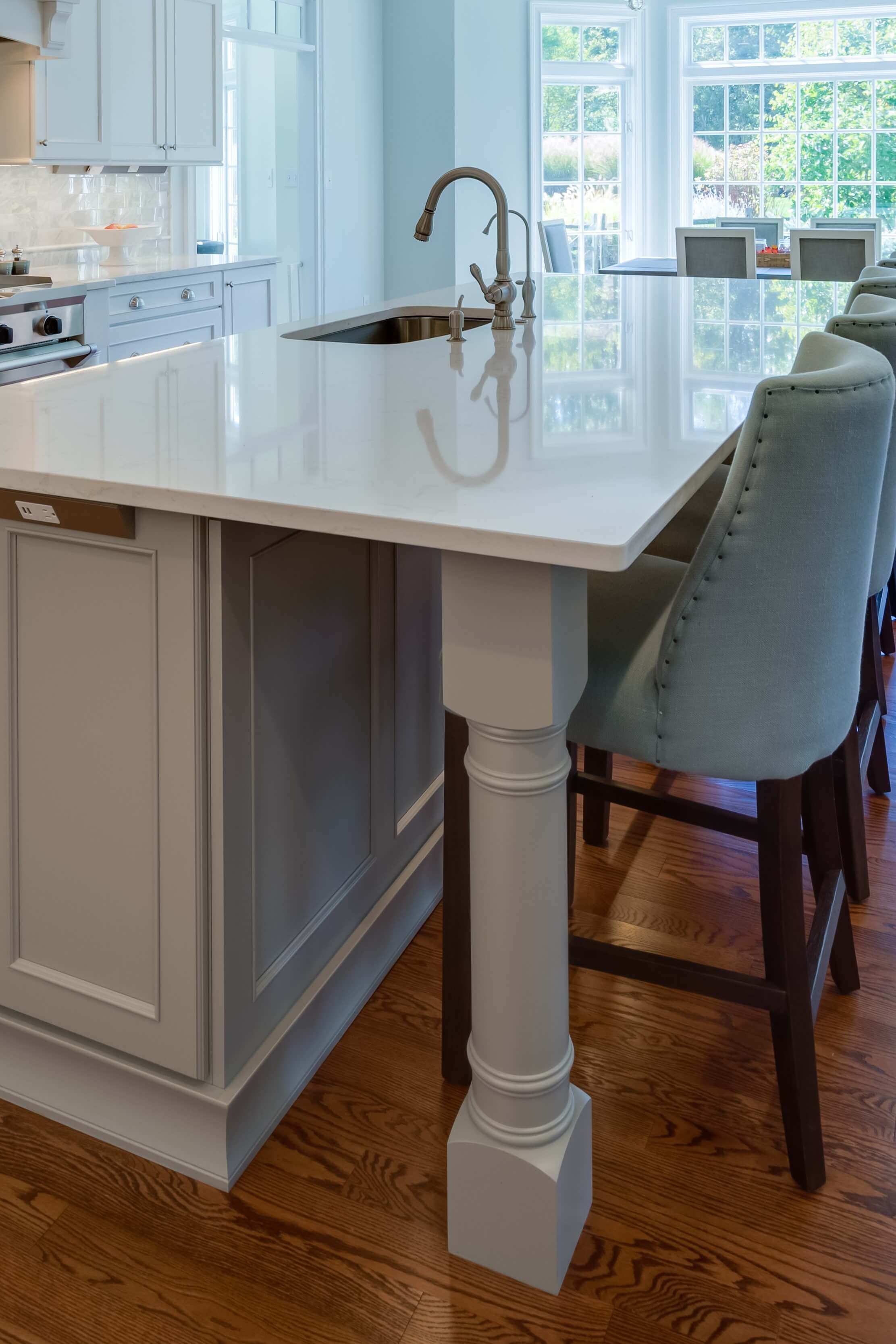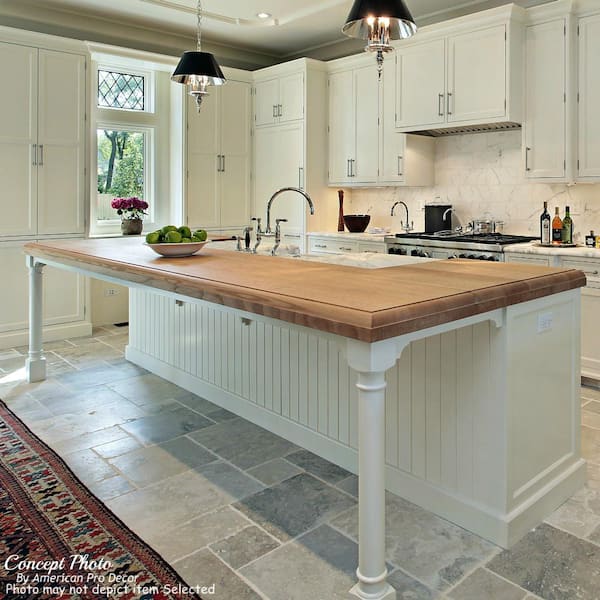High-grade Kitchen Island Legs for a Sturdy Island Base
High-grade Kitchen Island Legs for a Sturdy Island Base
Blog Article
Vital Tips for Picking the Perfect Table for Your Cooking Area
Picking the excellent dining table for your kitchen area is more than just a matter of taste; it necessitates a detailed understanding of your room and demands. Begin by measuring your available area to make certain enough clearance for activity. The shape of the table plays a critical duty; while rectangular tables match bigger areas, round ones foster intimacy, and extendable choices provide flexibility. Product option is similarly important, with hardwoods providing sturdiness and glass loaning a contemporary touch. Lastly, the table ought to harmonize with your kitchen area's aesthetic appeals and suit your household conveniently. What various other aspects might influence this crucial choice?
Step Your Space
Choosing the excellent dining table starts with a precise analysis of your available area. This foundational action guarantees that the table not just fits conveniently within the room but likewise complements the total format and performance of your dining area. Begin by measuring the measurements of the room, thinking about doorways, home windows, and any existing furnishings. This will help you identify the optimum allowable dimension for your dining table.
It is essential to leave appropriate space for chairs to be pulled out and for individuals to move around the table without blockage. A basic policy of thumb is to allow at least 36 inches of clearance from the side of the table to the nearby wall surface or item of furniture.
In addition, think of the number of individuals you commonly amuse and whether you require extra room for visitors. Going with an extendable table can give flexibility, enabling you to fit varying varieties of diners. By precisely measuring your room, you lay the groundwork for selecting a table that improves both the aesthetics and functionality of your dining area.
Pick the Right Shape

On the other hand, round tables are outstanding for smaller sized kitchens or intimate events, as they advertise discussion by allowing everyone to deal with each other. They also give a feeling of coziness and can fit well in tighter rooms as a result of their lack of sharp corners. Oval tables offer the finest of both worlds, incorporating the size of rectangular tables with the intimacy of round ones, making them flexible for numerous settings.
Square tables are an additional alternative, particularly suited for square-shaped areas. They create a modern-day and symmetrical appearance, cultivating an equivalent dining experience for all seated.
Material Considerations
When selecting a table, material considerations are vital in identifying the table's durability, upkeep needs, and total visual. Timber is a timeless option, using classic allure and effectiveness. Hardwoods like mahogany, oak, and walnut are especially resilient, though they can be expensive. kitchen island legs. Softwoods, such as want, are extra inexpensive however might be prone to dents and scrapes.
Glass-topped tables offer a contemporary, streamlined look and can make an area appear larger due to their openness. They need constant cleaning to protect against fingerprints and spots. Additionally, tempered glass is suggested for its additional stamina and security.

Last but not least, composite products like MDF (Medium-Density Fiber board) or plywood are economical choices. These products can imitate the appearance of solid timber yet may not use the very same durability. They are normally less complicated to tidy but can be vulnerable to water damage otherwise effectively sealed.
Inevitably, the choice of product need to straighten with your kitchen area's design, your way of life requires, and your budget constraints. (kitchen island legs)
Seating Capacity and Comfort
Exactly how do you determine the appropriate seating capacity and comfort for your eating table? This essential action entails analyzing both the physical space readily available in your cooking area and your household's practical requirements. Begin by measuring your kitchen area to ensure the table fits conveniently, enabling a minimum of 36 inches of clearance around it for very easy motion. Consider the variety of people that this website usually eat together, as this will affect the table size. For a household of 4, a rectangle-shaped table of 48 inches long or a round table with a 48-inch diameter is generally sufficient.
Comfort is just as necessary. The height of the table ought to ideally be around 30 inches, supplying a balanced ergonomic stance for seated restaurants. Chairs should have a seat elevation of 18 to 20 inches to More hints guarantee a comfortable dining pose. Additionally, take into consideration the chair layout; upholstered seats and supportive back-rests can boost eating comfort considerably, especially throughout long term meals.
Style and Looks
Choosing a table that matches your design and appearance involves balancing personal preference with the existing style of your eating room. The table is frequently the centerpiece of the kitchen, and its layout needs to match the overall style of the space. Whether your kitchen area boasts a modern-day, minimal appearance or a rustic, farmhouse beauty, the table you choose must harmonize with these elements to develop a cohesive and welcoming atmosphere.
Take into consideration products very carefully; wood offers an ageless appeal and can vary from abundant mahogany for a standard appearance to lighter oak for a contemporary feeling. Metal and glass tables, on the various other hand, can introduce a sleek, industrial side to your cooking area. Don't overlook the table's shape-- rectangular tables are flexible and classic, while round and oblong alternatives can foster a much more intimate dining experience.
Additionally, pay attention to surfaces and information. A distressed coating could add personality and warmth, whereas a shiny surface area can add to a tidy, contemporary visual. Eventually, your eating table need to not just healthy effortlessly right into your kitchen's layout however also mirror your individual design, boosting the room both functionally and aesthetically.
Final Thought
In verdict, selecting the excellent dining table for a cooking area requires mindful examination of space, shape, product, seating capacity, and aesthetic harmony. Inevitably, a well-chosen eating table cultivates a welcoming atmosphere and suits the family conveniently, thus boosting the dining experience.

When selecting an eating table, material considerations are extremely important in establishing the table's longevity, maintenance demands, and overall aesthetic. For a family members of four, a rectangular table of 48 inches long or a round table with a 48-inch diameter is typically enough.
Don't neglect the table's form-- rectangle-shaped tables are functional and traditional, while round and oval choices can promote a much more intimate dining experience. kitchen island legs.
Report this page